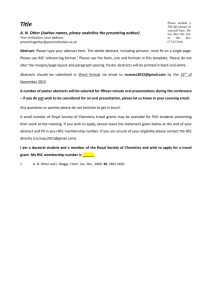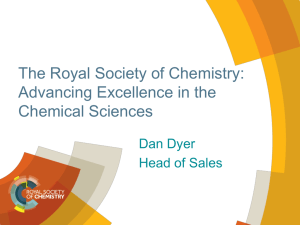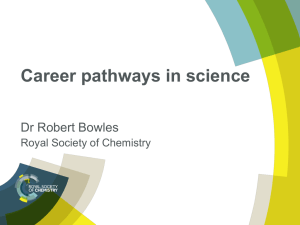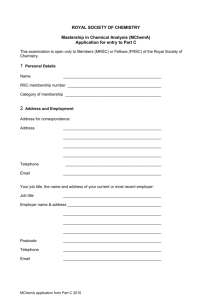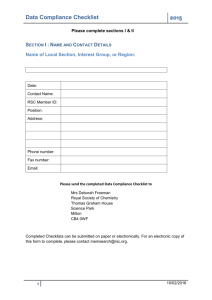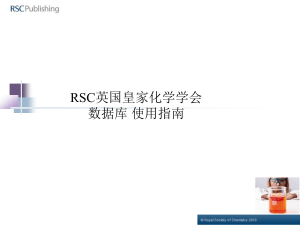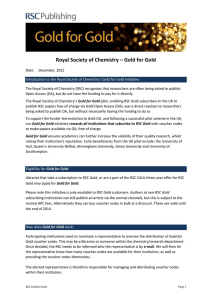Experimental data, AFM, SEM images, XRD, FT
advertisement
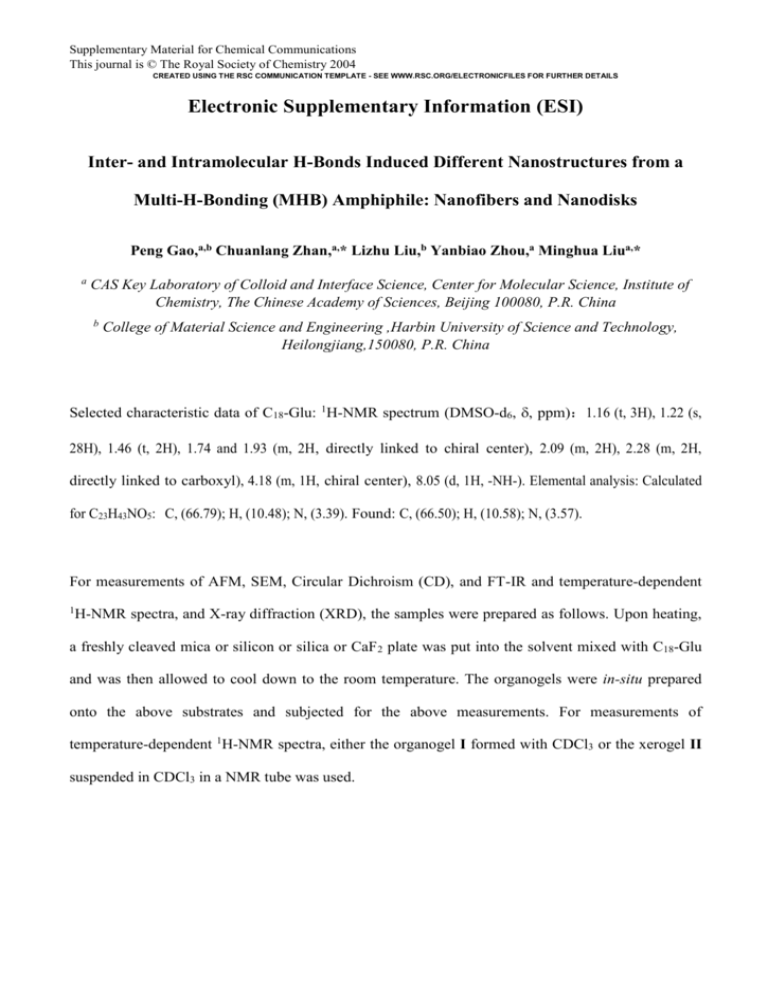
Supplementary Material for Chemical Communications This journal is © The Royal Society of Chemistry 2004 CREATED USING THE RSC COMMUNICATION TEMPLATE - SEE WWW.RSC.ORG/ELECTRONICFILES FOR FURTHER DETAILS Electronic Supplementary Information (ESI) Inter- and Intramolecular H-Bonds Induced Different Nanostructures from a Multi-H-Bonding (MHB) Amphiphile: Nanofibers and Nanodisks Peng Gao,a,b Chuanlang Zhan,a,* Lizhu Liu,b Yanbiao Zhou,a Minghua Liua,* a CAS Key Laboratory of Colloid and Interface Science, Center for Molecular Science, Institute of Chemistry, The Chinese Academy of Sciences, Beijing 100080, P.R. China b College of Material Science and Engineering ,Harbin University of Science and Technology, Heilongjiang,150080, P.R. China Selected characteristic data of C18-Glu: 1H-NMR spectrum (DMSO-d6, , ppm):1.16 (t, 3H), 1.22 (s, 28H), 1.46 (t, 2H), 1.74 and 1.93 (m, 2H, directly linked to chiral center), 2.09 (m, 2H), 2.28 (m, 2H, directly linked to carboxyl), 4.18 (m, 1H, chiral center), 8.05 (d, 1H, -NH-). Elemental analysis: Calculated for C23H43NO5: C, (66.79); H, (10.48); N, (3.39). Found: C, (66.50); H, (10.58); N, (3.57). For measurements of AFM, SEM, Circular Dichroism (CD), and FT-IR and temperature-dependent 1 H-NMR spectra, and X-ray diffraction (XRD), the samples were prepared as follows. Upon heating, a freshly cleaved mica or silicon or silica or CaF2 plate was put into the solvent mixed with C18-Glu and was then allowed to cool down to the room temperature. The organogels were in-situ prepared onto the above substrates and subjected for the above measurements. For measurements of temperature-dependent 1H-NMR spectra, either the organogel I formed with CDCl3 or the xerogel II suspended in CDCl3 in a NMR tube was used. Supplementary Material for Chemical Communications This journal is © The Royal Society of Chemistry 2004 CREATED USING THE RSC COMMUNICATION TEMPLATE - SEE WWW.RSC.ORG/ELECTRONICFILES FOR FURTHER DETAILS Fig. 1. 1H-NMR spectrum of the xerogel II suspended in CDCl3 at 334 K. In which the peaks at 3.7 and 4.2 ppm are all corresponding to the proton of chiral center. The separation of chiral center supports the strong interaction between inter-molecules through amide and carboxylic acid groups. Supplementary Material for Chemical Communications This journal is © The Royal Society of Chemistry 2004 CREATED USING THE RSC COMMUNICATION TEMPLATE - SEE WWW.RSC.ORG/ELECTRONICFILES FOR FURTHER DETAILS Fig. 2. Additional SEM and AFM height images of nanofibers of the organogel I from chloroform. Supplementary Material for Chemical Communications This journal is © The Royal Society of Chemistry 2004 CREATED USING THE RSC COMMUNICATION TEMPLATE - SEE WWW.RSC.ORG/ELECTRONICFILES FOR FURTHER DETAILS Fig. 3. XRD patterns of xerogels I and II of C18-Glu formed from 1:1 mixed water/ethanol (a) and chloroform (b), respectively. Supplementary Material for Chemical Communications This journal is © The Royal Society of Chemistry 2004 CREATED USING THE RSC COMMUNICATION TEMPLATE - SEE WWW.RSC.ORG/ELECTRONICFILES FOR FURTHER DETAILS Fig. 4. FT-IR spectra of xerogels I and II of C18-Glu formed from 1:1 mixed water/ethanol (a) and chloroform (b), respectively. Supplementary Material for Chemical Communications This journal is © The Royal Society of Chemistry 2004 CREATED USING THE RSC COMMUNICATION TEMPLATE - SEE WWW.RSC.ORG/ELECTRONICFILES FOR FURTHER DETAILS Fig.5. CD spectra of xerogels I and II of C18-Glu formed from 1:1 mixed water/ethanol (a) and chloroform (b), respectively. Supplementary Material for Chemical Communications This journal is © The Royal Society of Chemistry 2004 CREATED USING THE RSC COMMUNICATION TEMPLATE - SEE WWW.RSC.ORG/ELECTRONICFILES FOR FURTHER DETAILS Fig. 6. PCMODEL minimizing energies and structures for two kinds of intramolecular H-bonds between amid and –COOH and between –COOH groups, from which one can see that kind I is stable compared to kind II in molecular energy.
